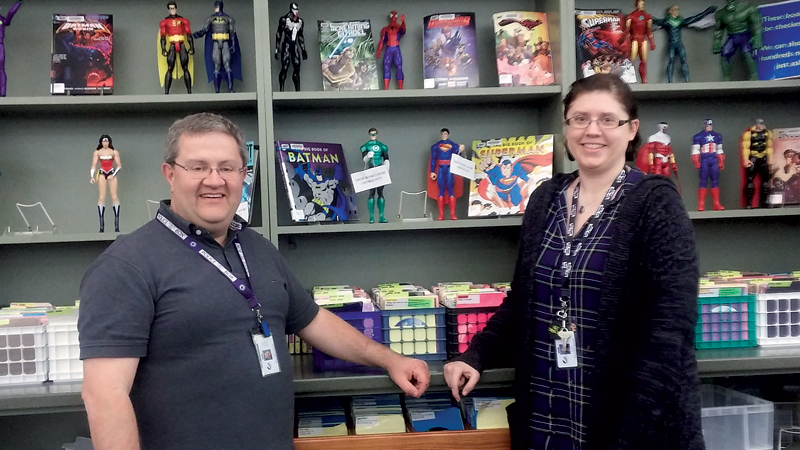MODERN LIBRARIES MEET MANY NEEDS

Historically, libraries have focused on getting information to their patrons. When Lambert began, her job was mostly to find out obscure facts—country capitals, a business’s address, an eclipse of the moon. That’s changed since the inception of the Internet, of course. Today, libraries are still in the business of answering questions, it’s just that the questions have changed.
Folks today have Google to answer trivia questions, and sites such as Wikipedia help provide background information. But these sources sometimes can be shallow or not credible. A school library, such as the one at Taylor University, has shifted its efforts to fill that void. A large part of a librarian’s work on a campus has to do with helping students find reliable sources. This becomes more important as students advance in school. Students enrolled in graduate programs are much more likely to seek help from a librarian, Lambert explained, especially with their writing projects.
In public libraries, the questions have a much broader range. One day they will be about helping someone find instructions on how to fix a car, and another day it will be about finding public records related to genealogy research. And of course, there will always be the routine questions, such as, “Where’s the bathroom?”
The role of a library largely depends on the community it serves, as well as the type of library it is. Public libraries, which are largely dependent on city and county governments for funding, do a lot to keep their patrons happy. Many have developed programs to better serve their community, such as sponsoring writing clubs, inviting famous authors to give talks, giving informative tours to scout troops or youth groups, and offering computer help to senior citizens.
A contemporary library’s main problem is relevance, and since the taxpayers in the area are pretty much in charge of the funding, if they feel that the library isn’t meeting the needs of the community, the funding will be less. Many libraries are responding to this by scheduling various programs for community members.
Take the St. Louis, Missouri County Library, for example, which has created a wide network of branches throughout southwestern Missouri. Not only have the branch libraries been renovated to have better lighting, updated technology, and more reference materials, they have also initiated service programs in response to patron requests. The libraries have both a summer and winter reading program. They also host bridge clubs and Lego parties and classes on how to use the library’s newest resources. Thus, each library has become as much of a community meeting center as it is a place to acquire information.
Of course, a large metropolitan library is very different from a small town library, such as the Rees Pogue Memorial Library in Upland, Indiana, which is currently focused on pooling its materials with other local libraries through a system called Evergreen. This allows a smaller library to have access to limitless materials through a lending network.
“Yes, times are changing,” admits librarian Linda Lambert, “and Taylor University is now focusing on building a collection of online resources and teaching students how to use them. We are purchasing ebooks, ezines, online journals and data bases. Our current website motto is ‘A library today is much more than physical books and journals,’ and we live up to that.”
That being said, Lambert does believe that there will always be a desire for print books. “There’s still a large demand for them,” she asserts. “Many patrons still prefer the heft and depth of a physical text.” A part of her job is circulating the library’s books in a system very similar to the system used to monitor magazine use. The ones not checked out very often are replaced with newer, more relevant books.
Is print dead? No, not by a long shot. But modern libraries are updating services and skills and even information delivery formats in a quest to meet the changing needs of the communities they serve. Their reservoir of information is more accessible than ever before.
Abigail Kessler is a professional writing major at Taylor University.
- THE POWER OF THE 72 – A Book Nook Review - May 11, 2018
- MODERN LIBRARIES MEET MANY NEEDS - April 13, 2018
- THE MAN WHO COULD TRANSFUSE TIME – A Book Nook Review - April 13, 2018


